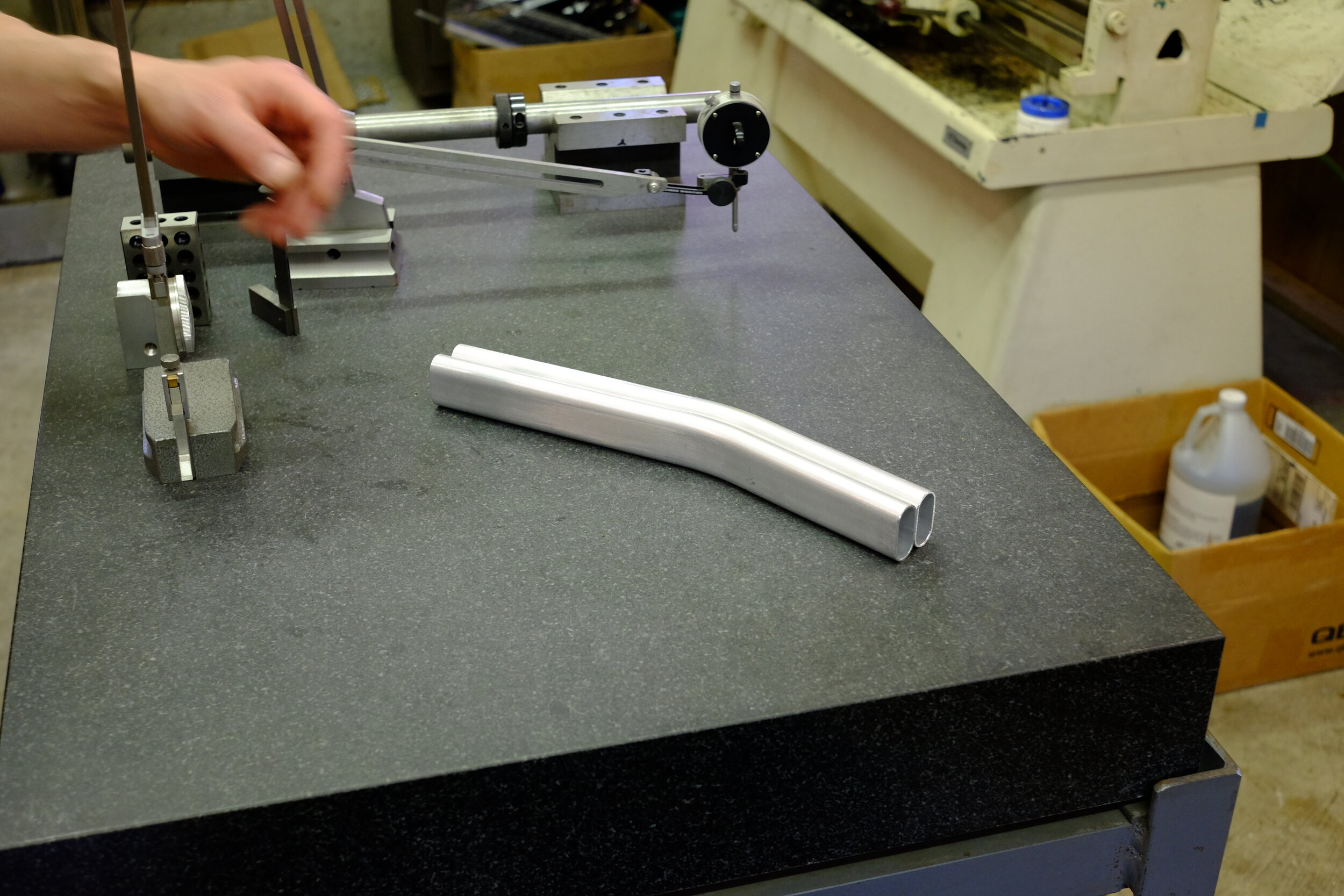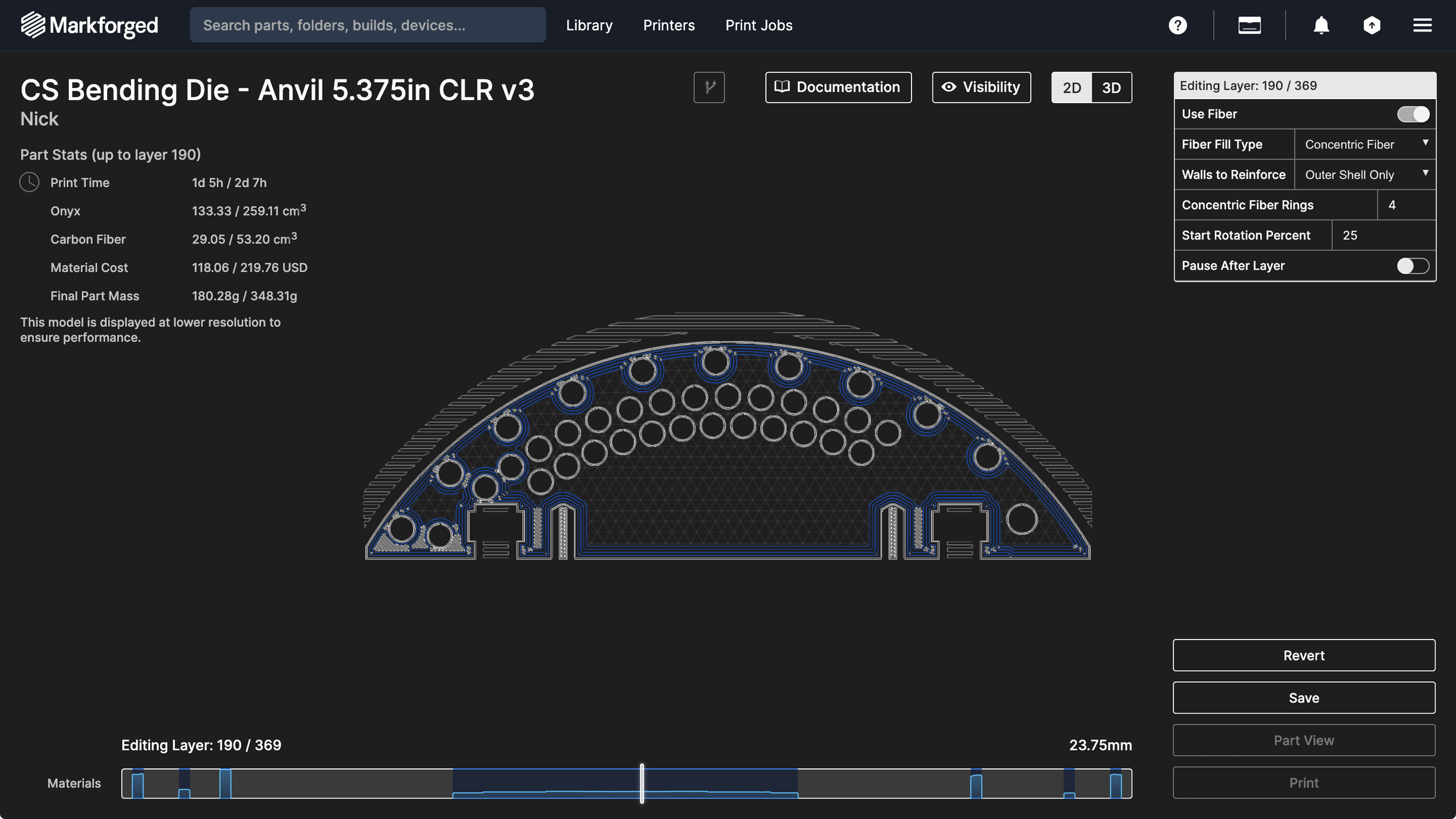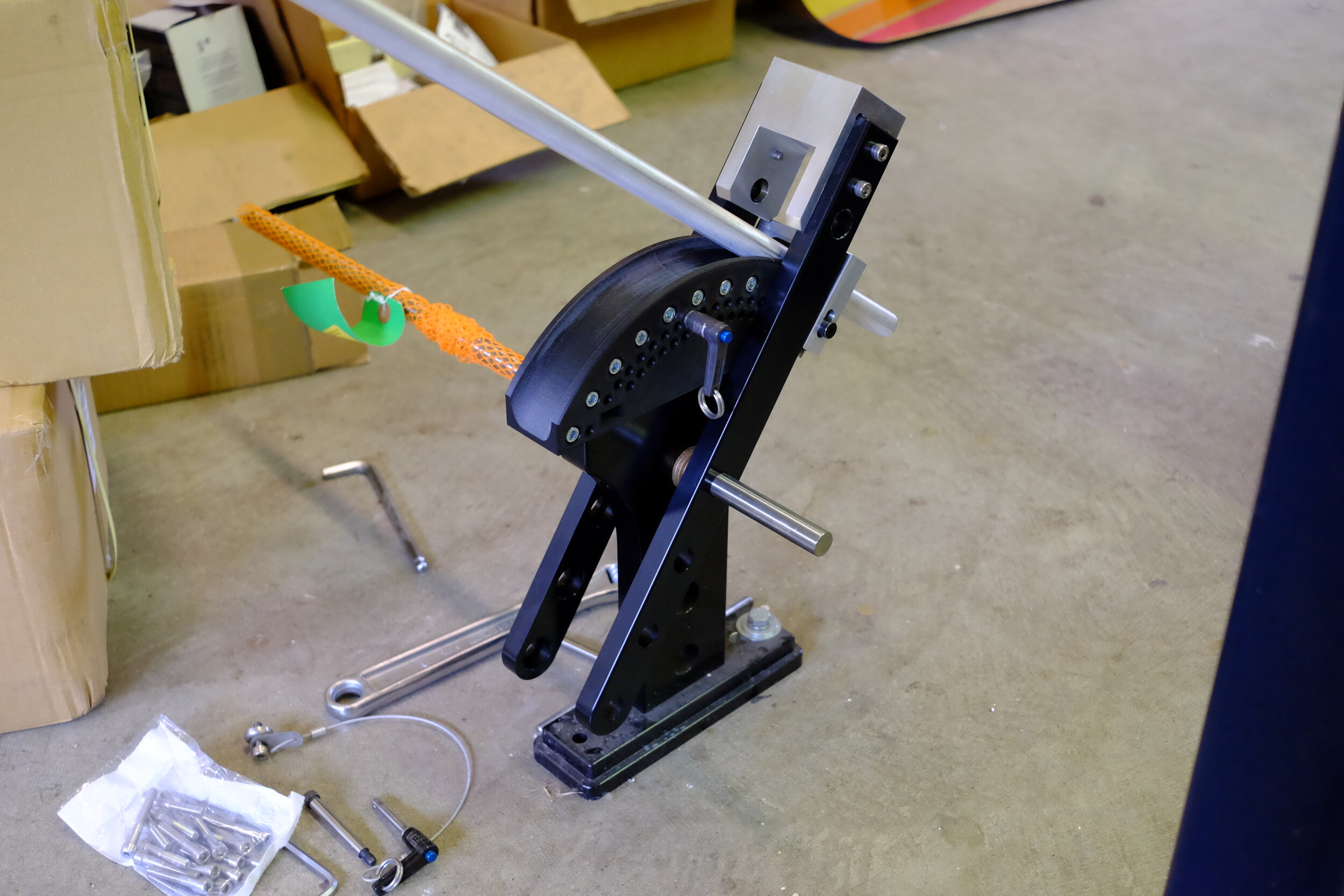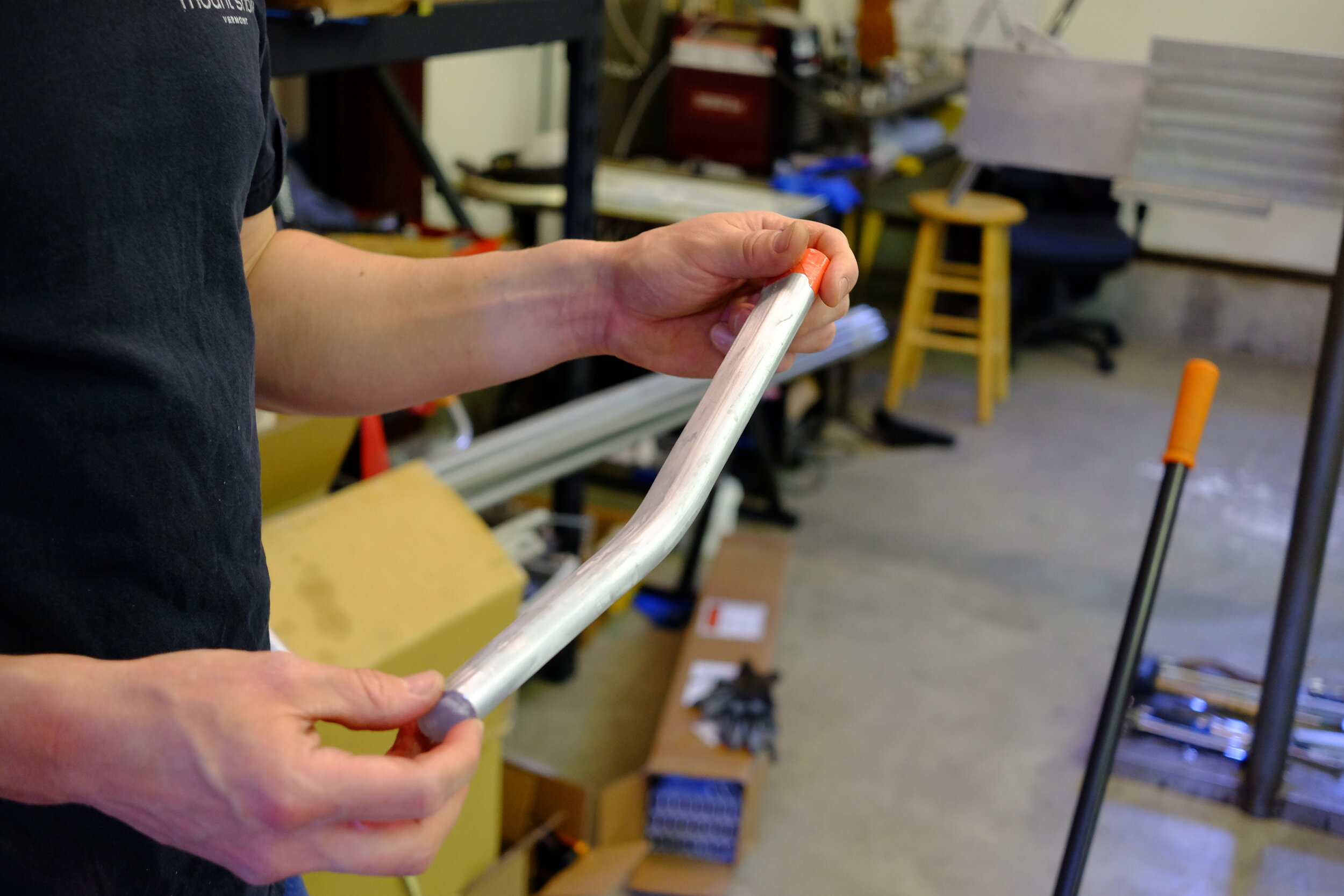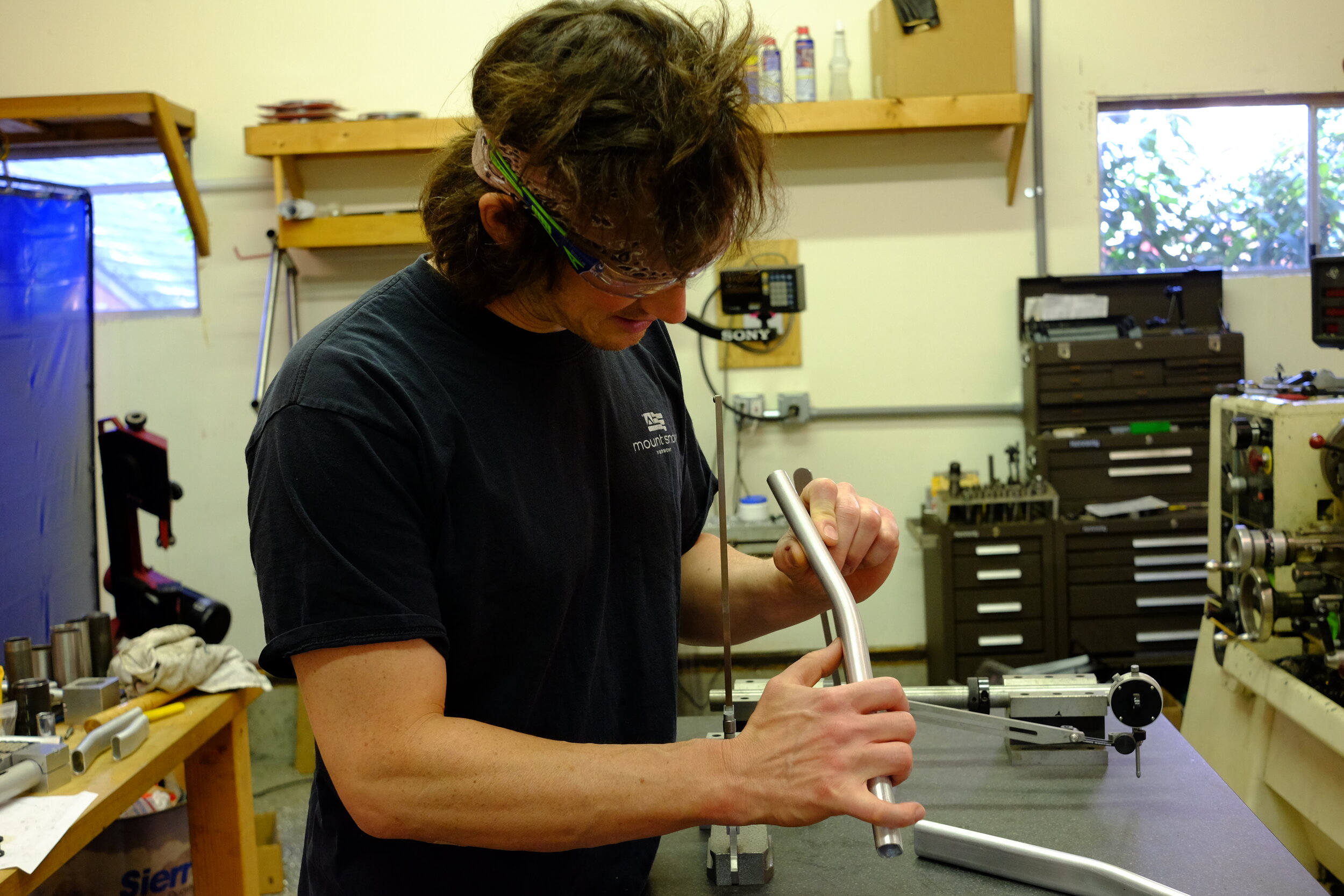Cutting Edge Old School
Advanced Technology for Traditional Fabrication
One might assume that we don’t use robots and carbon at Rebula MTB, because we build bikes made by cutting metal tubes and welding them together. We probably misled you with photos showing our manual lathes and milling machines, hand-drafted designs, or Chris Rebula with a torch in his hand and filing things to perfection. So, if it seems that we’re a little behind the times, that’s understandable. The reality, though, is that we use 3D models, additive manufacturing (robots!), and digital analysis in some surprising ways.
Rapid Prototyping, 3D Printing, & Additive Manufacturing
Twenty years ago, Rapid Prototyping was a novel way to turn computer-designed models of a part and into a physical object. It was amazing but slow and low-fidelity. More like a glue-gun on a robot arm, Fused Deposition Modeling (FDM) became faster and evolved into the desktop 3D Printers you can buy on Amazon or high-resolution machines at commercial model shops. Today you can also turn digital designs into metal parts quickly with a variety of methods, not just from one of a few Laser Engineered Net Shaping (LENS) machines. Back then Chris wanted to build bike parts out of a giant weld-pool using the LENS machine in the labs at Lehigh University. Rolling up all these advancements shifted the market from Rapid Prototyping (expensive, slow, but on-site) to 3D printing (slow, cheap, consumer-grade) to what is today Additive Manufacturing (faster, repeatable accuracy, commercial grade).
Recently, the bike industry has been putting these new technologies to use in ever more elegant ways. Framebuilders can make a chainstay yoke - normally a bunch of work to design and fabricate - by designing in CAD, ordering by uploading the file, and a metal part arrives. Some framebuilders have gone very deep with elegant lugs and dropouts, custom for each bike and gorgeous. Others are taking Additive Manufacturing in a different direction, printing lug sets to be bonded with carbon tubes for super-advanced custom full-suspension bikes. The new tools are opening up new worlds for bike design, where a custom bike can be digitally designed, computationally analyzed with rigor, and fabricated for a customer with amazing speed and stunning results.
Prototypes to production tools
Two years ago, a friend with a commercial 3D printer offered us some cycles for experimentation, and we used it to mock up parts like custom yokes and dropouts before sending them to get cut at our machine shop. Then, we needed to mock up a new bending die, and that’s where the magic started to happen for us.
Bending dies are a staple of custom bike fabrication: it’s how we make seat stays, swoopy top tubes, and chainstay profiles that clear your wide tire and your chainring. For a new line of bikes we’re building, the chainstay is a rounded rectangular box section. Because of the material we’re using, the part needs to be supported uniformly through the bend, so a bending die needs to be designed to match this exact tube profile. Normally we would design a custom die, then get it machined. This is time consuming, expensive, and we have to get it right the first time. As a geometry check, we wanted a print, but maybe we could do better.
Markforged has been working on applications for additive manufacturing for industrial tooling for a while, so we called a friend and former MIT Cycling teammate, Nick Sondej, who works at Markforged to learn more. Nick helped us model it so they could build it with continuous carbon fiber nylon, which is their secret sauce. It’s exceptionally strong and durable. In short order, we had what we thought would be a prototype die. For once things worked out easier than we expected: the printed prototype turned out to be exceptionally robust, and it’s now production equipment.
Faster, better, cheaper Tooling
Printed tooling is now our standard for new designs, and it’s opening up new possibilities for us. The next challenge we’re working on with Markforged is a deep-draw stamping die for a geometrically complex gusset design, then fixtures for production machining.
We’ve gotten a bunch of inquiries about how to put this to use, so if you’re interested go ahead and ask in the comments section or contact us and we’ll gladly help point you in the right direction.




